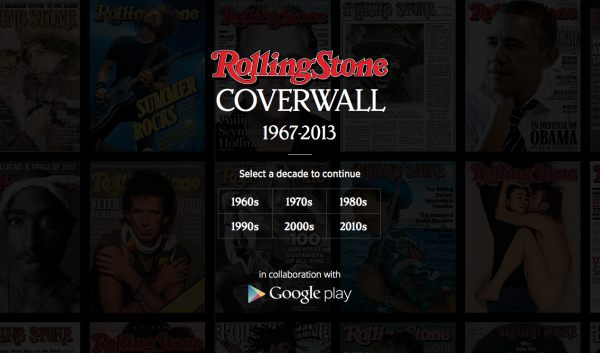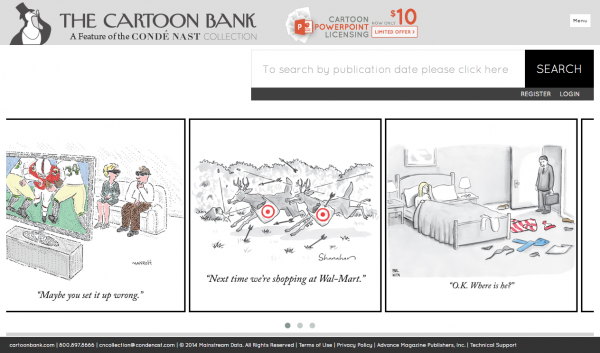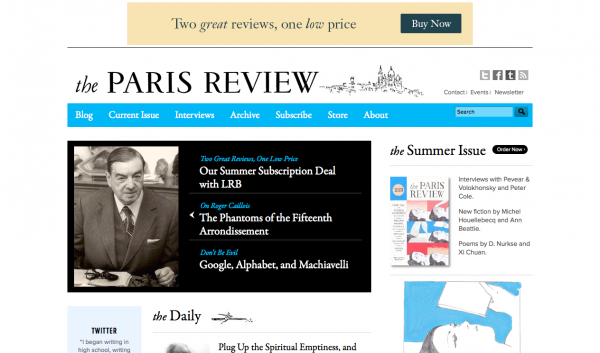Multi-platform publishing examples that brought these magazines to rockstar status
Do you remember the saying, “one man’s trash is another man’s treasure?” For smart and innovative magazine publishers, this little idiom rings true across the board. Just as your recyclables are picked up every week and crunched into reusable products, so can multi-platform publishing repurpose the wealth of content you have available. Old things get turned into new things. Trash made into treasure.
Here at Mequoda, we love to find multi-platform publishing examples that showcase fresh ways to recycle content. As the digital age continues to morph into an ever-changing, ever-growing beast (feasting on the bones of print materials), multi-platform publishing continues to become a necessary tool for business growth and sustainability.
[text_ad]
There are many magazines (hopefully all, at this point!) that have established an online presence, but only a select few take advantage of a fully integrated multi-platform system. These publications are raising the bar for what it takes to succeed in today’s marketplace and communicate with an evolving, technology-driven audience. For this post, we’ve chosen four multi-platform publishing examples that show how it’s done.
Big Events = Big Opportunities for Multi-Platform Recycling
One of the most useful (and exclusive) multi-platform publishing examples are conferences and summits. These events house a plethora of high-fidelity content to be repurposed. In the past few years, The Atlantic has taken full advantage of this concept by forming their annual CityLab: Urban Solutions to Global Challenges conference.
A different major city hosts this two-day event each year (London was the host in 2015) and boasts numerous panel discussions and presentations from the world’s leading voices on urban challenges. What does this mean for multi-platform publishing? You guessed it–every second of these conversations are captured on camera and bursting at the seams with content that readers want to see, hear and talk about.
These recordings are now a video series online; provide support for articles by staff writers, and even influenced a complete overhaul of The Atlantic Cities website into the newly (and appropriately named) CityLab.

Recycle Your Cover Art Into Interactive Content
Think for a moment: what’s the first thing you notice as you glance over a newsstand or magazine rack? The covers. A whole mess of different covers with pictures and artwork battling to grab your attention. No one else does this better than Rolling Stone. Since 1967, this magazine has published evocative cover pictures so well, they have become a commodity for art collectors and rock n’ roll fans by themselves.
This culture has given Rolling Stone a gold-mine opportunity for repurposing content. Through collaboration with Google Play, the magazine now offers an interactive view of their back issues online within their “Coverwall” section. Viewers can see every cover from 1967 to 2013, plus read selected articles by clicking on the picture.
Evocative quotes from interviews riddle the page as you scroll down to re-visit (or travel back in time) the music of decades past.

Cartoons Create Money Balloons with Multi-Platform Publishing
The New Yorker has consistently ranked (with us) at the top tier of multi-platform publishing examples. Their brand wheel is extensive, utilizing various ways to recycle content. From their Double Take blog (where old articles get repurposed into new content) to their issue archives, the New Yorker sets the bar for other magazine publishers in today’s digital landscape.
One of the New Yorker’s signature features is its insightful, humorous, and witty cartoons. They’ve been published in the magazine since its inception in 1925, and now can be purchased and used through their Cartoon Bank. Thousands of cartoons, which were not utilized after each issue period ended, are now being utilized in a big way. The Bank makes millions of dollars per year, a large percentage of which is paid to the cartoonists directly.

Recycle Your Most Popular Content onto Multiple Platforms
One of the reasons why the Paris Review has continued to grow and maintain a loyal readership is because they focus on making available (across different platforms) their most popular content: the writer interviews. Since 1953, this literary magazine has conducted interviews with big name writers all over the world, compiling a wealth content that’s unique and easily repurposable.
Now that the Paris Review has fully integrated themselves online, every interview is available for visitors to browse and read through–for free! These freebies give the magazine a leg up on the competition for attracting website traffic while also creating numerous windows for soft selling products or subscriptions on the sidebar of each page. What’s more, they’ve recycled these interviews into compilation books (both in print and digital) to sell in their online store.

The Takeaways from these Multi-Platform Publishing Examples
Content repurposing is an integral part of the multi-platform publishing process. It’s much easier and less expensive to recycle from one platform to another, rather than trying to create (and maintain) new content for each. Now you can save time while creating more opportunities to sell services, products or ad space–all with the same content.
So what have these four multi-platform publishing examples taught us? Let’s list a few of the takeaways:
-
Live events can (and should!) be professionally recorded for later use. This high-fidelity content can be repurposed as a video series, articles, blog posts, and more.
-
If there is a certain culture surrounding the content you publish, make it available across different platforms so readers can interact with it. (Let them live out their rock n’ roll fantasies!)
-
Almost every form of content can recycled in some way. If you have a plethora of cartoons, images, pictures, or the like, you can sell the licensing rights online.
-
Consider the unique content that keeps your readers coming back. If you can archive that content online and offer it to website visitors for free, that will open more opportunities to sell subscriptions, products, and ad space.
Do you have another innovative way to recycle content? Is there one you think should be in this list of multi-platform publishing examples? Let’s start a conversation!
If you’re looking for more comprehensive advice on this subject, download our Multiplatform Publishing Strategy Handbook—for free!



